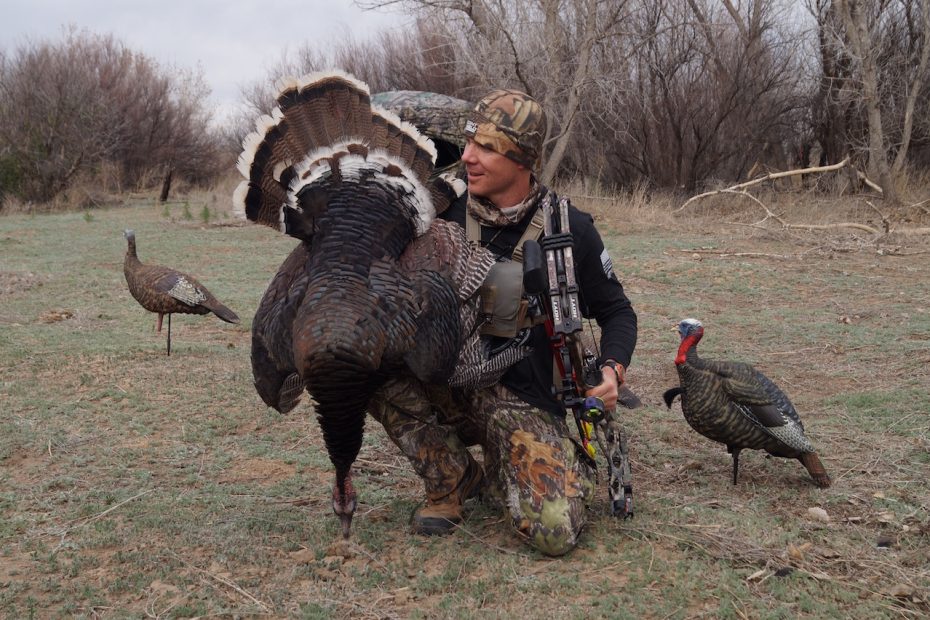
It was late April, and I was in the Cornhusker State with a turkey tag in my pocket. What could be better? The forecast was beautiful — 70-degrees and sunny with mild southeast winds. I’d scouted the public dirt I’d planned to hunt via my Hunt Stand app. I found a few cottonwood patches along a no-name creek that looked suitable for roosting. There was no agriculture on the Walk-In ground, but two corners of the property butted up to private-land grain fields. The dirt rolled nicely, and areas of dense cedar trees provided good cover and room for midday scratching and loafing. From the research I’d done, the soil seemed to be sandy, and tracks and strut marks would be easily identifiable. I was sure I was in the chips.
As it turned out, I was right. The 640-acre property had plenty of birds — four toms that I saw with my own eyes and a gaggle of jakes. The problem: I wasn’t the only person who had dropped a pin on the property. The parking area was dust. There had been so much tire and boot traffic the vegetation was gone. Three vehicles, one with a camper, made fitting my Chevy in the marked parking ground almost impossible. Yikes!
I don’t have to tell you the hunt was a grind. The birds were beyond skittish. I called at two different lone toms — both did an about-face and walked the other direction. I got in close on the birds three times, and though I was tucked in a ground blind, the birds, every time at the last minute, putted, dropped strut, and ran.
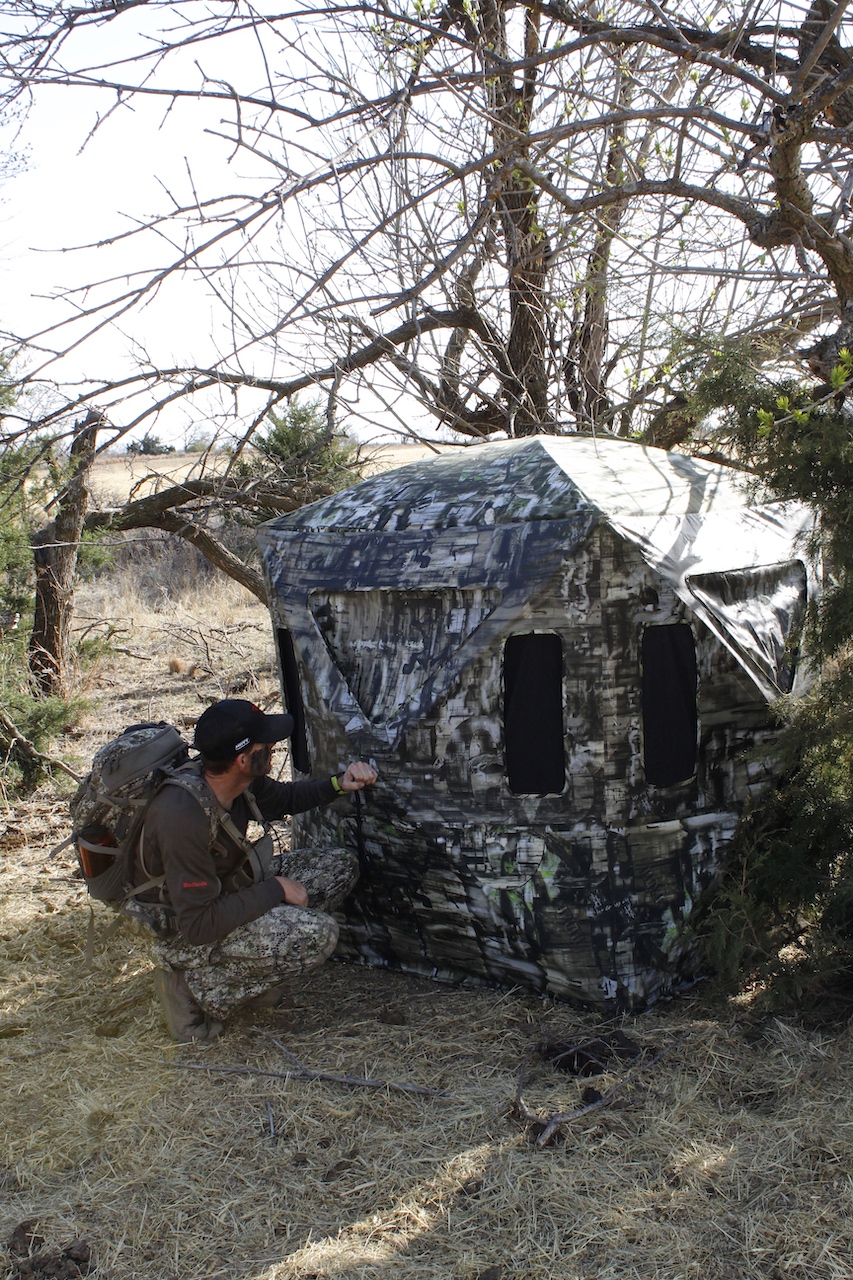
I didn’t kill a bird on that hunt. However, I wouldn’t trade those five Nebraska days for anything. I learned a lot, and the following season and every season since, I’ve used what I learned to harvest pressured public-land birds with my stick-and-string. Here’s what you need to know.
Watch and Learn
It’s hard, I know. You’ve dreamt about killing a public-land longbeard for a year. You’ve done your digital scouting and research, and you want to dive in. Pump the brakes if you can. When I show up to a public-land hunt area, even if the location seems to be void of other hunters, I treat the dirt and the birds on it like they’ve been hounded to death.
Start your morning in the vehicle or on top of a hill, ridge, or plateau. Even pressured birds gobble on the roost, and a big part of this system is pinpointing roost sites. Stay out of low road dips and areas that take you far from trees if you’re scouting from your vehicle. You want to park on top of rises — even if those rises are super tiny — where you can hear a bird gobble. If you’re scouting on foot, gain elevation, sit down, and listen. A gobble can be heard from a very long distance on calm days.
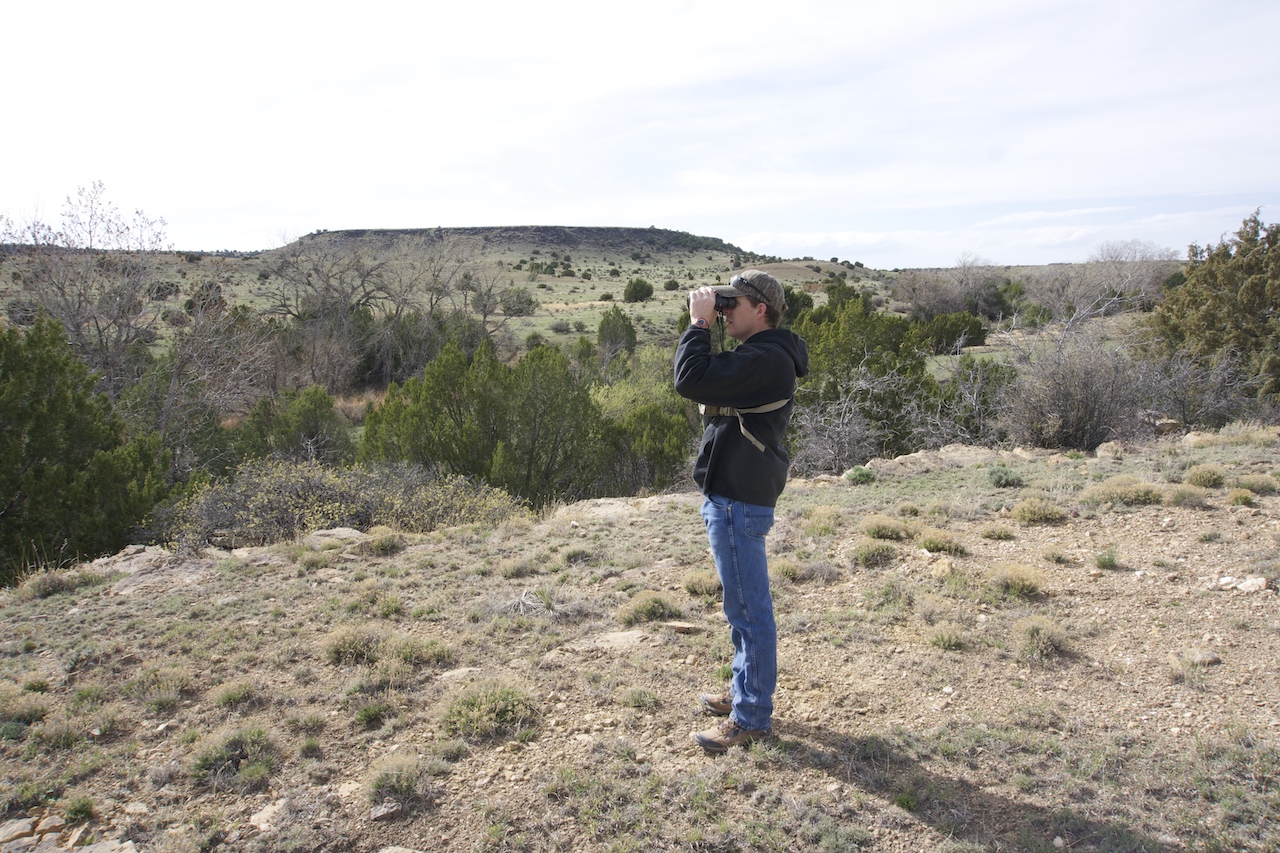
I ignore close-to-access gobblers and pin the location of birds that are off-the-beaten-path. Boy birds that roost close to access roads, logging roads, and near likely food sources make easy targets for other hunters.
Once you locate a bird or three roosting a reasonable distance from the parking area, pull up your digital mapping app and do a terrain study. The goal is to predict where the bird or birds will move after flying down. Things to ask yourself while making your prediction include:
- Is there a private-land agriculture field nearby?
- Is there a long, semi-open ridge where a boy bird can strut?
- Are there any small openings (mini-meadows) deep in the timber where birds could scratch for seeds and bugs without exposing themselves?
- Is there an open sage or cactus flat (western hunting) where the birds could get in the middle of and see danger coming from a distance?
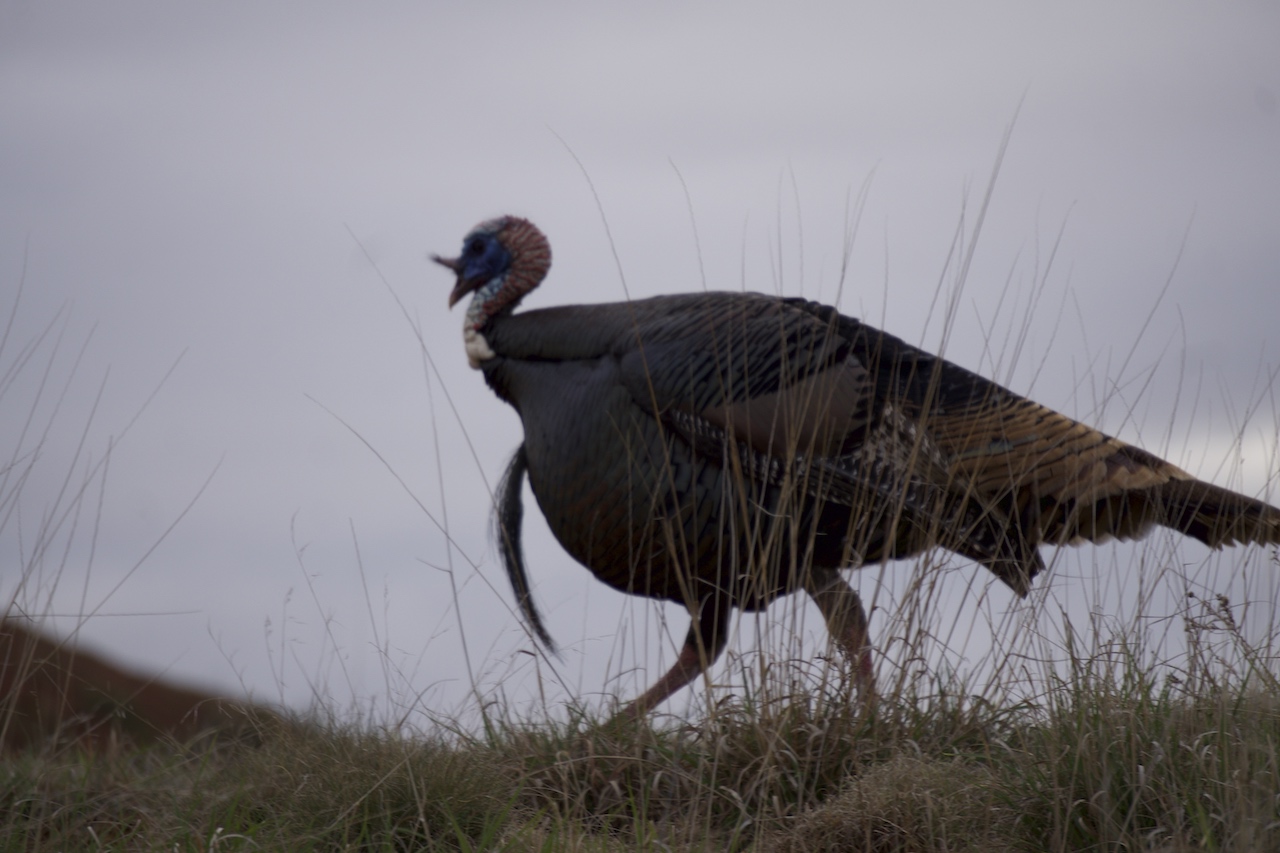
Depending on your geographic location, you should make a reasonably accurate prediction. Once you make that prediction, stay put if you’re on foot. You have elevation, and chances are good a tom will gobble, or a hen will yelp as the birds move from their roost to a new location. If you hear a bird talk, pinpoint the sound and then triangulate where the birds roosted, where the sound came from, and where you predict that they will go.
If you’re in a vehicle, you can do the same, but many turkey properties are surrounded by enough access roads that you can drive the perimeter and glass areas where you believe birds will end up.
If you haven’t caught on, the plan is to develop the properties MRI (most recent information).
But what if other hunters are already there?
No problem. I prefer it if the property is being hunted. If you stay mobile and stay behind your glass, you will see where other hunters are concentrating their efforts and see what the birds are doing to avoid those efforts. With one full day of scouting under your belt, you have a great hunt plan for the following day.
Don’t put all your eggs in a roost-hunt basket. My favorite way to kill a pressured public-land bird is to be where they want to be two or three hours after they pitch down. Why? Remember toward the beginning of the article, I wrote how multiple toms tucked tail and ran at the last second even though I was in a ground blind? When hunting pressured birds, I have discovered that if I take my time and blend that ground blind in — get it the shadows — birds are none the wiser. It’s hard to gather forest debris, tuck a blind into cover, and get everything set when you’re super close to the roost.
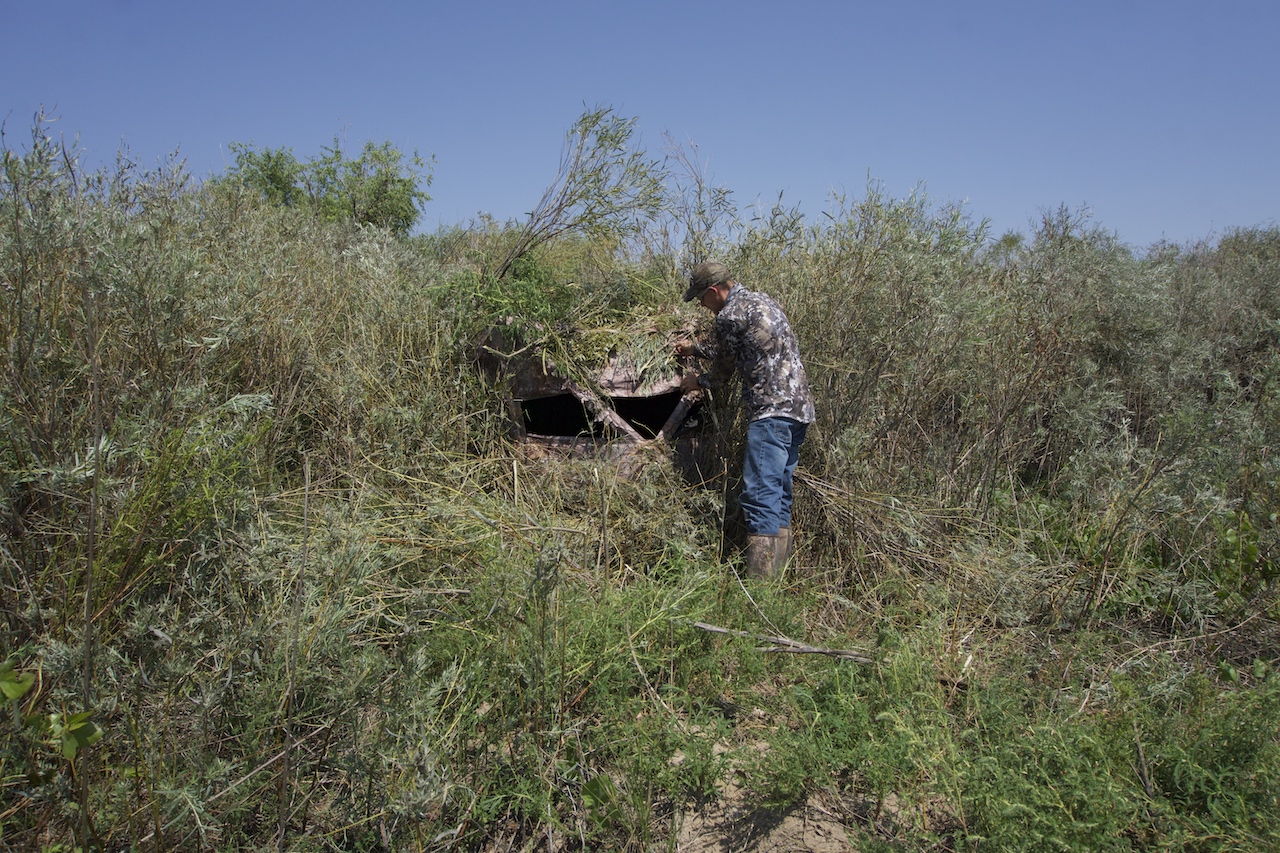
Once you have the blind set and ready, it’s time to think about decoys. If you’re in an open area where shots could be beyond 30 yards, I recommend a 3/4-strut jake decoy over laydown hen combo. Leave enough space between the jake and the hen for a boy bird to walk between the two. Another option I like if I feel hunt pressure has been significant is using a couple of feeding hen decoys. Two feeding hens are about as natural as it gets and should bring a boy bird bow hunting close.

When it comes to calling, I let the attitude of the birds dictate how I call and how much I call. Typically, pressured birds won’t be ultra vocal, and yelping and cutting loudly will send birds that may have been on their way to you in the opposite direction. If you’re in a good turkey area, I recommend staying quiet, and if you do call, using single note yelps and purrs and clucks.
If you play it smart and get where the birds want to be, you can kill a pressured public-land tom. Enjoy, and best of luck this spring.
